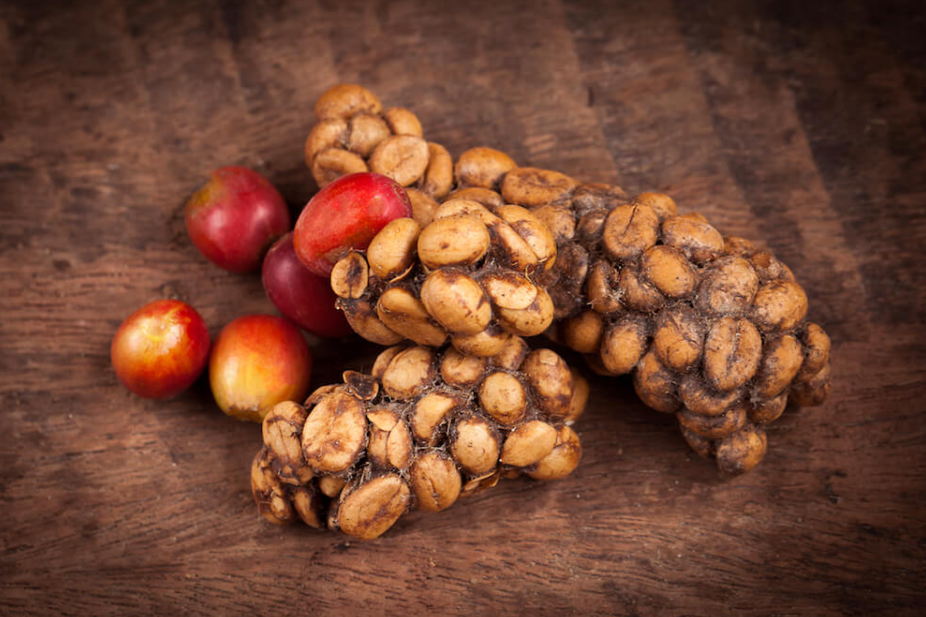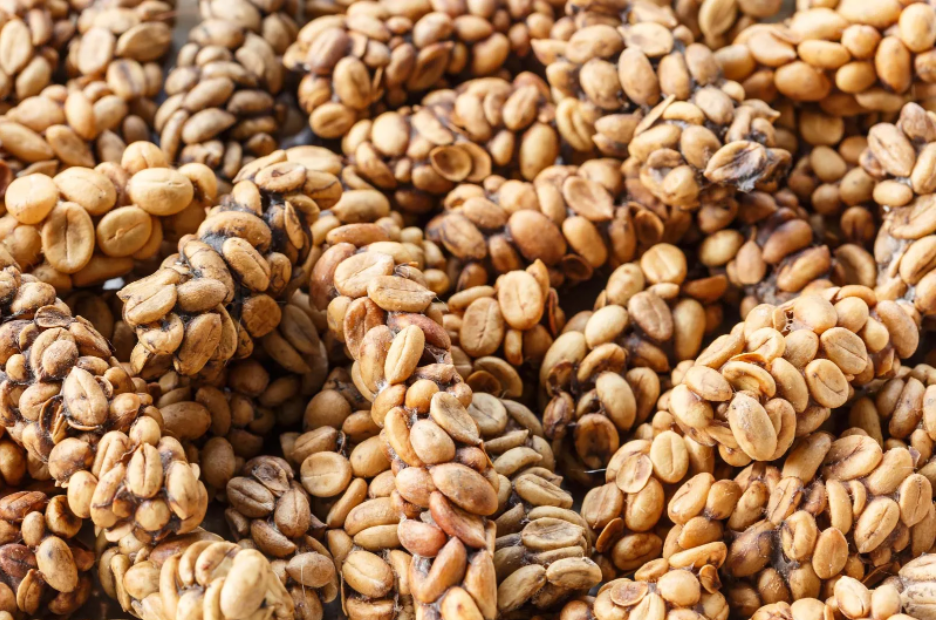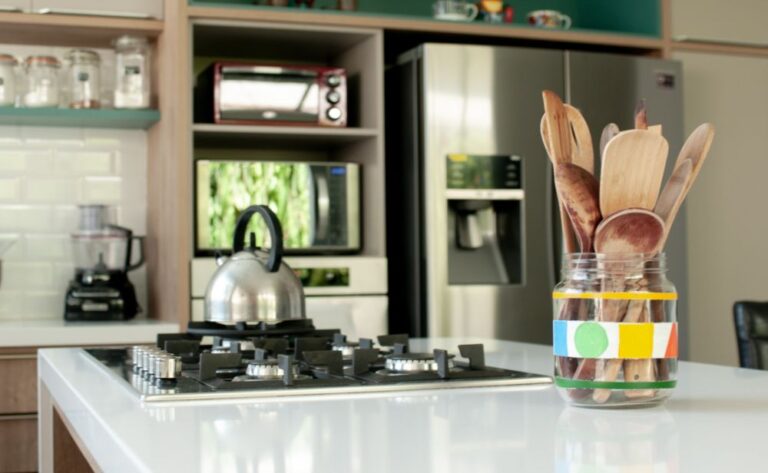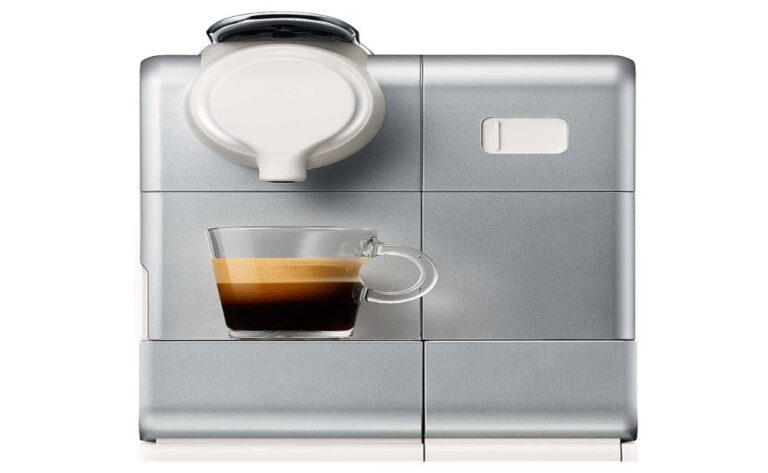
What is it & Why’s It Popular?
What is Kopi Luwak coffee, anyway?
Kopi Luwak is an Indonesian coffee that has been digested by an animal called an Asian palm civet. The civet is a cat-like creature that roams the forests of Bali at night, eating ripe coffee cherries and excreting the coffee beans. The beans are then gathered, cleaned, and roasted. The result? Kopi Luwak is also called civet cat coffee or cat poop coffee.
The history of Kopi Luwak coffee starts way back in the 1700s when the Dutch first set up coffee plantations in Sumatra and Java. According to legend, the locals noticed that wild animals were eating the ripe coffee cherries and leaving the beans behind. They were prohibited from harvesting coffee beans for themselves, so they started brewing coffee from these discarded beans.
More recently, this specialty coffee started showing up on the gourmet coffee scene in America in the 1990s. This was thanks to Anthony Wild, author of the famous coffee book, Coffee: A Dark History. These specialty beans soon appeared on the Oprah Winfrey Show and in the Jack Nicholson movie,

What’s the Kopi Luwak price?
Kopi Luwak was all the craze then and has continued to be pretty popular ever since. And it’s famous for something other than its unique processing: its price. A cup of Kopi Luwak coffee typically costs between $35 and $100, and the per-pound price can range from $100 to $600. That’s 20 to 60 times more expensive than average coffee!

Why would you want to eat or drink poop coffee?
Cat shit coffee does sound gross, but there’s a good reason that Kopi Luwak is so sought-after. The idea is that, unlike human coffee pickers, wild animals will only eat the best, ripest cherries, so you don’t end up with inferior, unripe beans. Plus, the enzymes in the civet’s digestive system alter the coffee beans, producing a smoother cup of animal coffee.
How do they do that? While passing through a civet’s stomach, the cherries get fully stripped of their fruity exterior. It’s essentially a very thorough washing process that prepares the beans for drying and roasting. Without any fruit left on the bean, mold doesn’t grow, resulting in a better cup of coffee.
It’s funny how some urban legends just catch on and become mainstream truths.
You have probably heard some of them before:
- Ostriches bury their head in the sand when scared
- Einstein failed math in high school
- Bulls are enraged when seeing the color red
- etc
Of course, none of these are true. If ostriches bury their head in the sand, they would either die of asphyxiation or get eaten by predators. Soon the species would be extinct.
Upon closer examination, none of these claims make any sense whatsoever. Still, myths like these persist.
COFFEE MYTHS: ENTER KOPI LUWAK
The same is also true in the realm of coffee. In fact, there are many widespread coffee myths and misbeliefs (I’ll address those in a separate post).
But there is one false conception that is so widespread and long-lasting that no matter debunking seems to work. And that is that the ‘kopi luwak is the best/most expensive coffee in the world myth.’
I can’t count how many times people have asked me about my opinion of kopi luwak.
It’s a paradoxical situation because to any common sense person it should be evident that we’re talking about an urban legend.
Would you think that any food or beverage would taste better after being mixed with – ahem – shit? If that’s not the case, why do you think that coffee is somehow different?
Still, it seems that about 99 percent of the world’s population wants to believe the kopi luwak hype.
I know it probably won’t change much, but this is my attempt to break the world’s delusions and set the record straight.
THE ORIGINS OF CAT POOP COFFEE
To understand how kopi luwak came to prominence we need to take a brief historical detour. Back in the 1600’s the coffee market was very different from today. One of the most prominent origins was the Dutch East Indies – a group of islands that is today known as Indonesia.
Indonesia was the first country besides Ethiopia and Yemen, where coffee was grown on a large scale, and at one point the island of Java became almost synonymous with coffee in Europe.
But by 1830 the Dutch created a more strict set of rules governing agriculture in the colony. This meant that the native farmers, who were already accustomed to drinking coffee, were suddenly no longer allowed to pick any beans for their own use.
Somehow these caffeine-craving coolies discovered that a small cat-like animal – the palm civet aka the ‘Luwak’ – ate the coffee cherries and passed the seeds without digesting them.
The workers were pretty smart, and the Dutch never forbid collecting dung. It didn’t take long before they began collecting, roasting, and brewing these defecated beans, so they could get their caffeine fix.
THE ‘PROCESSING ARGUMENT’
Back then coffee picking standards and processing weren’t anywhere close to those of today.
When picking coffee, it’s critical to only go for cherries that are perfectly ripe. As with any other fruit, this ensures that the sugar level is at its peak.
Animals prefer ripe fruits so there is something to suggest that the wild palm civet might have been more selective than the laborers at the Dutch-owned estates. But this is speculation.
Coffee processing, in its essence, is all about stripping away the fruit while avoiding the development of mold.
Strictly speaking, 30 hours in the stomach of an animal would do precisely that.
It is possible that this combination of carefully selected cherries and efficient processing made the coffee superior to anything available back then. However, it’s worth remembering that the general standard of processing wasn’t anywhere close to those that are employed by specialty coffee producers today.
THE MARKETING BEGINS
One of the first rules of marketing is to turn a thing that can be perceived as a fault into a feature. This is precisely what happened next.
Kopi Luwak quickly gained attention from the colonial overlords.
An idea spread that the coffee was somehow ‘smoother’ than regular coffee
Due to the somewhat limited supply of kopi luwak, high prices could be fetched when exported. Still, this kind of coffee wasn’t big business, and when large-scale commercial coffee production took off other places besides Indonesia, interest in kopi luwak faded.





